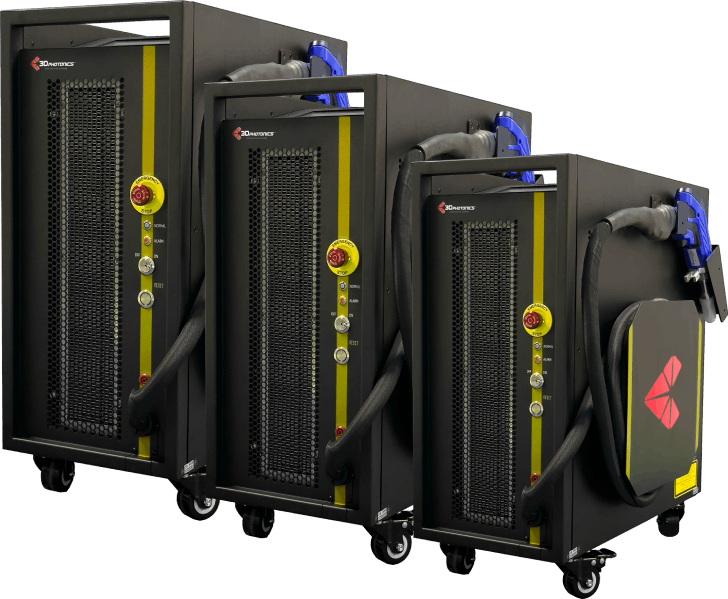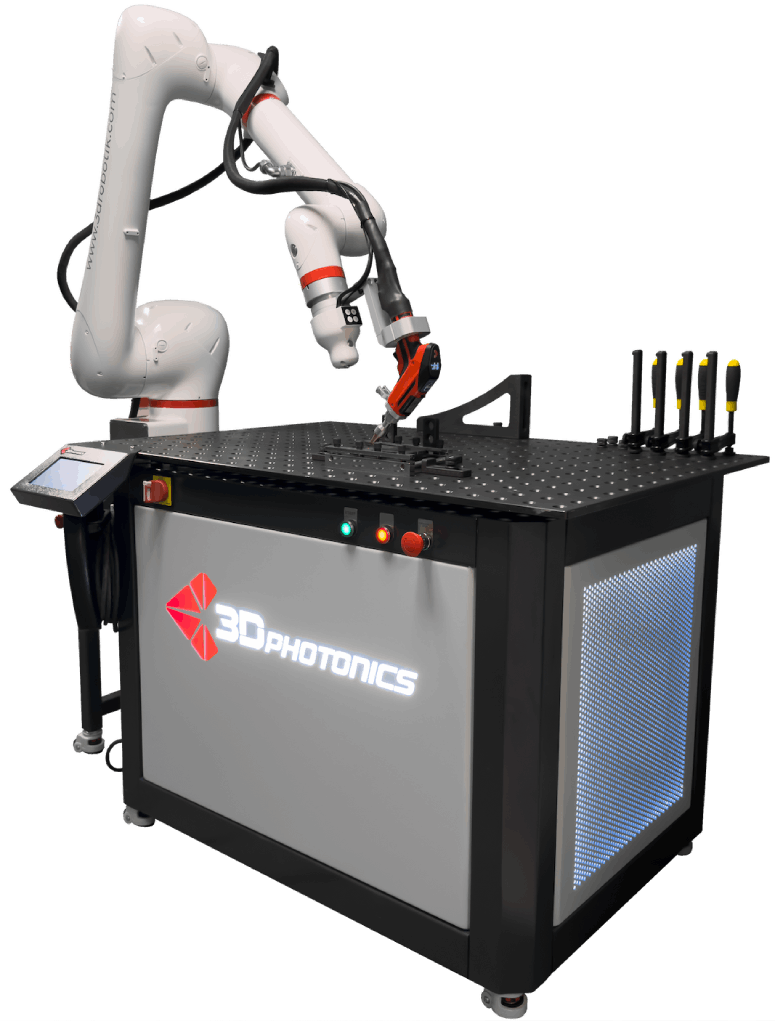Adjustable Beam Lasers





Laser systems equipped with "ABL" technology, also known as "Tunable Beam Lasers", are high-tech devices widely used in industrial applications. These systems are specifically designed to provide superior performance in processes requiring high precision, such as metal welding.
These lasers typically use an array of mirrors or lenses to focus a laser source. However, tunable beam lasers are equipped with advanced optical systems and control algorithms. In this way, the laser beam can be directed to the targeted material much more dynamically.
Especially "ABL" technology offers the ability to adjust the intensity, focal length and even wavelength of the laser beam. This provides greater control and flexibility in where the laser focuses. These systems are also equipped with the ability to focus the laser beam at several different points.
Superior control capabilities make it possible to precisely direct the laser beam at every stage of the welding process. This allows for more precise and repeatable results when joining metals. Deep penetration capabilities refer to the ability of the laser beam to penetrate into the material. This paves the way for creating more robust and flawless sources.
Advanced tunable beam lasers offer this dynamic control, as well as the ability to dynamically shape multiple lights. This feature stands out as an important element in creating perfect welds in complex geometries and different materials.
As a result, adjustable beam lasers are a technology that makes it easier to weld metals together with superior control and deep penetration capabilities thanks to "ABL" technology. . Its dynamic shaping properties and multi-beam directing ability pave the way for creating perfect welds and finds wide use in industrial applications.
FLEXIBLE CONTROL
Frequently Asked Questions
Laser welding is a welding method that utilizes a high-energy laser beam. This method is used to join or weld two or more materials. The working principle of laser welding includes the following steps:
Providing Laser Welding Energy: Laser welding is typically performed using a laser device or laser welding machine. These devices generate high-energy laser beams. The laser beam is directed towards the workpiece by a laser welding head.
Focusing: The laser beam is focused using a lens or mirror system. This allows the beam to be concentrated on a specific point on the workpiece.
Directing the Beam onto the Workpiece: The focused laser beam is directed onto the region of the workpiece where joining is required.
Heat Transfer: When the laser beam makes contact with the workpiece, it imparts high energy, rapidly heating the material. This heat causes the material to reach its melting or vaporization temperature.
Melting and Vaporization: The material that comes into contact with the laser beam melts or vaporizes as it reaches high temperatures. This creates a welding pool or bond necessary for joining the materials.
Cooling and Solidification: When the laser beam is turned off or moved, the molten or vaporized material rapidly cools and solidifies. This finalizes the joining of the materials and the welding process.
Key advantages of laser welding include high precision, fast processing, low heat impact, and minimal deformation. This is why it is a preferred method in many industrial applications that require precise and high-quality welding.
In industrial applications, laser welding offers a range of advantages, and these advantages can include:
High Precision: Laser welding provides high precision and accuracy. This is a significant advantage in applications where components need to be joined or holes need to be drilled with precision.
Fast Processing: Laser welding typically offers a faster process compared to other traditional welding methods. This can increase production speed and streamline manufacturing processes.
Low Heat Impact: Laser welding has the capability to keep the workpiece's temperature low during the welding process. This can reduce material deformation and thermal stress, especially important for sensitive materials.
Minimal Deformation: Unlike traditional welding methods, the laser welding process minimizes environmental deformation of the workpiece, enhancing the quality of the final product.
Minimum Staining and Cleanliness: Laser welding tends to produce minimal welding stains or residues, resulting in a cleaner and more polished appearance of the final product.
Joining Different Materials: Laser welding can be used to join different materials, which is important in applications that require a variety of materials or complex projects.
Long-lasting Equipment: Laser welding equipment typically has a long lifespan and requires minimal maintenance.
Good Accessibility: Laser welding provides the ability to work in narrow and hard-to-reach areas, offering design flexibility.
Environmentally Friendly: Laser welding produces less waste compared to traditional welding methods, making it an environmentally friendly option.
These advantages make laser welding a preferred welding method in various industries. Especially in applications requiring precision and high-quality welding, laser welding plays a significant role.
The speed of the laser welding process depends on a variety of factors and can vary. These factors include:
Material Type: The type of material to be welded affects the speed of the laser welding process. Different materials have different thermal conductivity properties, which impact the heating and cooling times.
Material Thickness: Material thickness can also affect the speed. Thicker materials may require more energy and time.
Laser Power: The power of the laser used determines the speed of the welding process. Higher power can enable faster welding.
Speed Settings: Laser welding equipment may have different speed settings to control the movement of the workpiece. These settings are used to adjust the speed of the welding process.
Welding Geometry: The shape of the workpiece and the location of the welding area can also impact speed. Some workpieces may require more complex or longer welding paths.
In general, the laser welding process is typically faster compared to other welding methods. However, the specific speed in a given application depends on the combination of the factors mentioned above. In any case, laser welding is known for its advantages, including high precision, minimal deformation, and reduced heat-affected zones.
Laser welding can be used to join different types of materials. Here are some of the common types of materials that laser welding can join:
Metals:
- Steel
- Aluminum
- Copper
- Titanium
- and other metals
Can be combined with laser source.
These metals are frequently used in industrial applications.
Non-Ferrous Metals: Non-ferrous metals such as aluminum are joined by laser welding, especially in the automotive and aerospace industries.
Joining these materials with laser welding is done by taking into account the optical properties and thermal response of the material during the process. Each type of material may require specific laser welding parameters and therefore it is important to understand the material properties and make settings appropriate to the process.
Laser welding has a wide range of applications across various industries. Here are some of the industries and areas where laser welding is commonly used:
Automotive Industry: Laser welding is frequently used in the automotive industry for joining, repairing, and manufacturing metal parts. It is employed in the production of vehicle bodies, chassis, exhaust systems, and more.
Aerospace and Space Industry: Laser welding is crucial in the aerospace and space industry, where lightweight and durable materials need to be joined. It is used in the manufacturing of aircraft bodies, rockets, and spacecraft.
Medical Devices: In the medical industry, laser welding is used to join precise and biocompatible materials for the production of medical devices. For example, it is widely employed in the manufacturing of implants and surgical instruments.
Electronics Industry: The electronics industry utilizes laser welding for the production of circuit boards, microchips, and other electronic components. It is ideal for joining delicate and thin parts.
Energy Generation: In the energy industry, laser welding is used for the maintenance and repair of energy generation equipment. This includes the production and maintenance of solar panels, nuclear reactors, and other energy equipment.
Metal Processing and Manufacturing: Laser welding is commonly used in the metal processing and manufacturing industries. It is employed in the production of metal structures, vehicles, buildings, and other metal products.
Defense and Military Industry: The defense and military industries use laser welding for joining precise and durable materials and for the manufacturing and maintenance of equipment. It is also used in the production and maintenance of weapon systems.
Laser welding is a preferred welding method in these industries due to its advantages, including high precision, fast processing, minimal deformation, and a low heat-affected zone.



